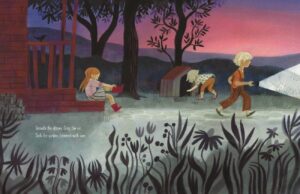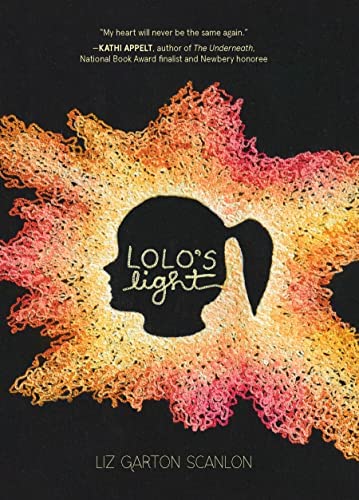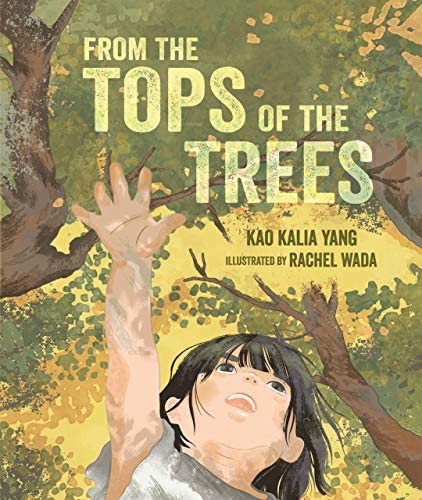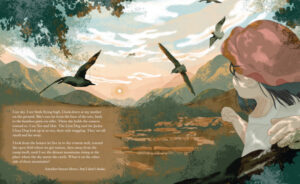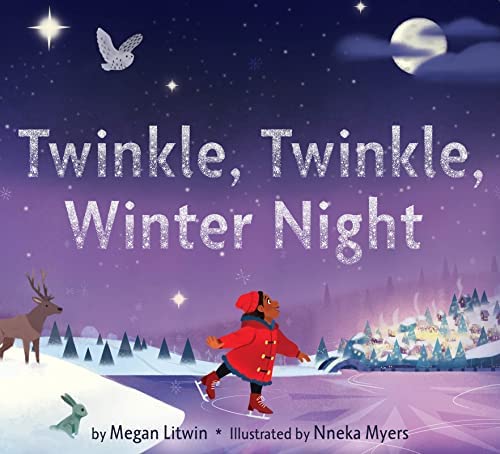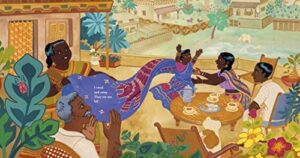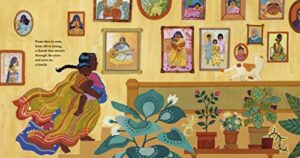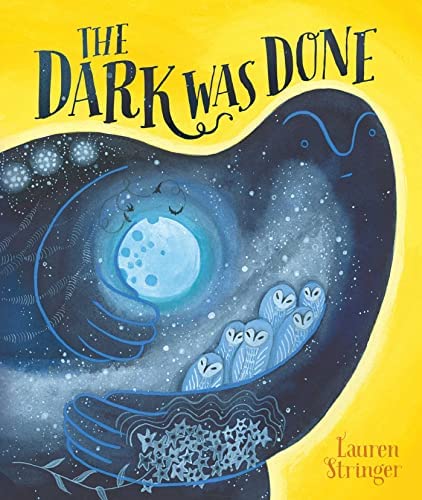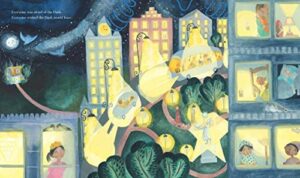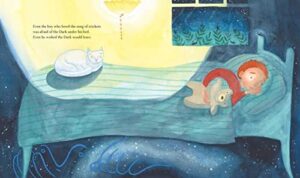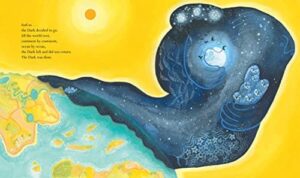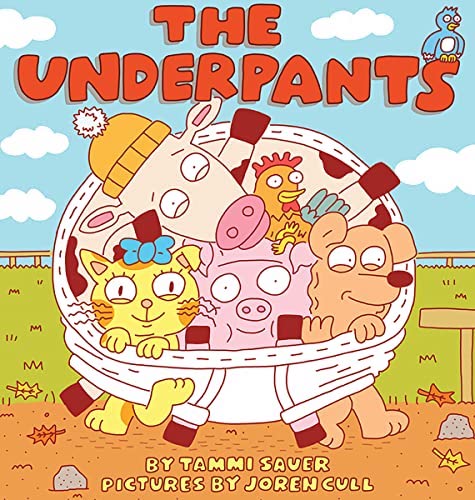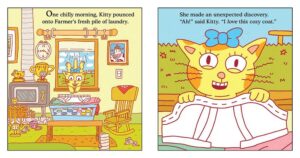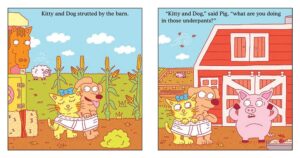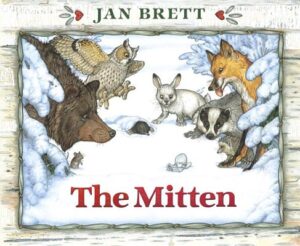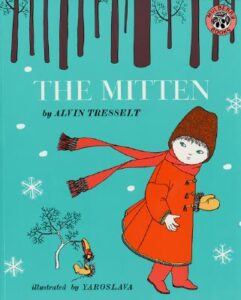Beach Lane Books/S&S | 978-1534487895
It’s here! My newest book, DARK on LIGHT is out in the world! A companion to the other “color on color” books I’ve published with Beach Lane/S&S (BLUE on BLUE and GREEN on GREEN), DARK on LIGHT is a picture book about that gorgeous space of time between dusk and dawn.
CLICK TO ENLARGE © text by Dianne White, illustration by Felicita Sala
I’m especially proud of these books because, for me, one of the most exciting parts of the picture book process is seeing the way an illustrator expands my words. This has been especially true for these “color on color” books. The text of each of the three infers kids play a key role in the story, but the characters are not named or described in any way. Hints about the setting are included in the text, but there’s plenty of room left for the illustrator to imagine and interpret the setting in any way she likes.
Who are the people in the story?
Where do they live?
Why are they on a walk through a garden and beyond?
What will they discover?
These are the kinds of questions an illustrator asks herself as she begins to consider the work. (As a side note, I remember reading this interview with illustrator Beth Krommes shortly before my first book, Blue on Blue, came out. It was fascinating to learn that Beth wrote six pages of notes as she considered the various ways she could approach the illustrations.)
Most readers are unaware that much of the illustration process happens outside the author’s reach. Starting with initial sketches, the editor and illustrator work through several revisions as the above and similar story questions are answered. It’s this magical collaboration between editor, illustrator, and art director that make the book so much more than words alone – a marriage of images and text, words and sound, all working together to create a narrative experience that is more than the sum of its parts.
Isn’t this illustration by Felicita Sala, simply stunning?
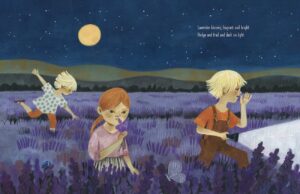
CLICK TO ENLARGE © text by Dianne White, illustration by Felicita Sala
To learn more about the book, its awards and reviews, check out the DARK on LIGHT book page on my website.
Additional Resources:
- Download this Activity Kit for DARK on LIGHT
- Read my Guest Blog Post on Teaching Books
- Listen to this “Meet the Author” audio recording with Teaching Books for more of the back story behind the book, as well as a short introduction to the beginning of the story
- Pair DARK on LIGHT with its companions, GREEN on GREEN and BLUE on BLUE.
- Discover more art activities and information to pair with my books on my PINTEREST page!








